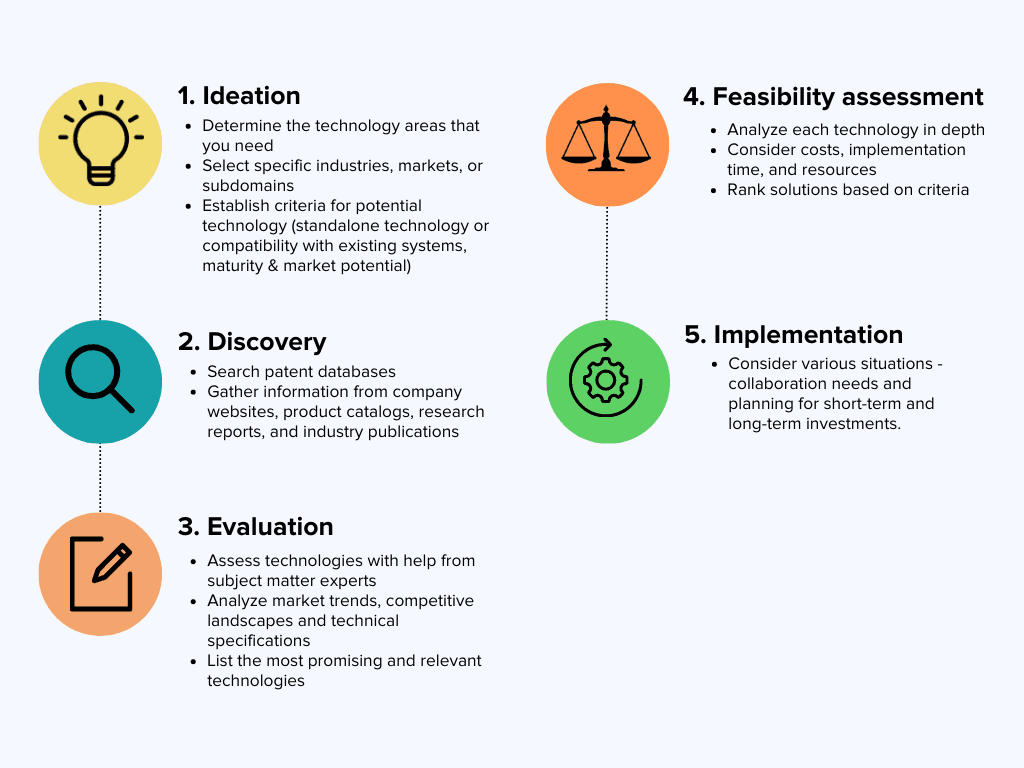Share
Share

Technology Scouting 101: What It Is, The Process and Advantages
The adage “Excel or die” is the cornerstone of product driven businesses. Companies that do not invest in cutting-edge research run the risk of fading away and losing popularity. The foundation of most companies lies in an initial set of innovative ideas, based on which they build differentiating products and create their initial success. However, simply relying on past success and innovating around it may not be enough to maintain a competitive edge. Improvement patents, whether they are addition inventions (adding a component that wasn’t part of a process or product) or substitution inventions (replacing a process or product with a new one that is more effective for the same purpose), are useful in strengthening the existing patent portfolio, but it’s still important nonetheless to keep tabs on emerging technologies that can disrupt the industry space one is operating in. This is why companies must have an active technology scouting program.
What is technology scouting?
Technology scouting is the process of identifying, analyzing, and assessing existing or new technologies. It is a part of a broader open innovation strategy, where R&D professionals search and partner with others for technologies outside of their company. Those responsible for this activity (technology scouts) can be in-licensing directors, external business development directors, or consultants with cross-domain knowledge.
Let’s take a closer look at what the process of technology scouting entails:

Advantages of technology scouting
1. Spot potentially disruptive innovations before it’s too late
Maintain an active technology scouting program to continuously identify innovations that are of prime importance. Doing so automatically reduces the risk of an unpleasant surprise from the competition.
2. Take pre-emptive actions on important patents associated with a technology
Knowing which patents are important in a technology area can help you make informed decisions about M&A and licensing. For example, for those industries where patent pooling is common e.g., wireless technologies, video encoding or biotechnology, you can negotiate a license from the patent pools.
3. Faster patent portfolio development helps maintain competitive edge
During technology scouting, you are likely to come across companies or other entities whose patents you could acquire for use in your existing products or in future areas you plan to diversify in. Bolstering your existing portfolio makes it difficult for competition to work around your products or enter the business segment you are looking to diversify in.
To summarize
Technology scouting is a vital activity for research institutes, companies, and IP professionals to keep pace with technological advancements and maximize their IP portfolios. A well-executed technology scouting process enables you to identify opportunities for growth and innovation, ensuring your success in the competitive landscape.
